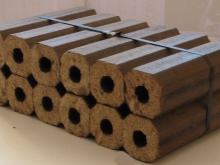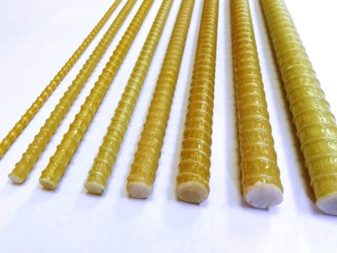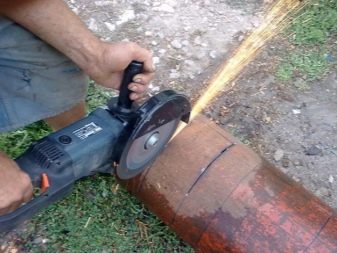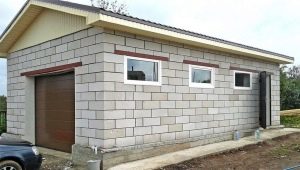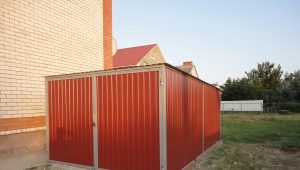How to make a furnace for the garage of the gas cylinder?
With the onset of cold weather, caring car owners are looking for an opportunity to warm their “iron horse”. To remain without a vehicle due to low temperatures is an unpleasant pleasure. In a room designed for parking, there should be a stable temperature all year round. Otherwise, the equipment may simply rust. Today we will talk about how to make a furnace for the garage of the gas cylinder.
Features, types and functionality
To achieve an optimal climate in the boxing of cars in several ways - from elementary insulation in the walls, ceiling, roof and on the floor to summing up the central and natural heating systems. An autonomous heater - a stove from a used gas cylinder - will become an option that is average in terms of complexity and budget.
Especially handy car owners have long thought through the design of such furnaces to the smallest details.By itself, the idea of this heating garage is not new, but has a number of features, which are detailed below.
Heaters for the garage of gas (usually propane) cylinders are much more economical and more functional than other homemade stoves. Their main advantage is that they are convenient for thermal decomposition of fuel. The elongated shape of the gas cylinder is optimal, therefore it meets the basic requirements of the furnace without additional alterations. Only two holes are enough - for access of oxygen and emission of carbon dioxide into the chimney.
Such "potbelly stoves", as a rule, are subdivided into two types - vertical and horizontal. If desired, they can be combined.
Advantages and disadvantages
The positive aspects of homemade ovens include:
- excellent thermal conductivity (it is provided by the thick metal walls of the balloon);
- comfortable dimensions (can be made to fit your garage);
- ease of manufacture and maintenance;
- availability of consumables and fuel.
Among the few drawbacks, it is possible to single out only the ability to use a limited number of types of fuel (wood, coal, fuel briquettes),and in the case of vertical construction, the necessity of adjusting the size of logs to the length of the firebox is also necessary.
Design features and principle of operation
There are no special constructive differences from their relatives in terms of solid fuel. It consists of three sections:
- directly the firebox with a grate (it burns fuel);
- blew (provides access to oxygen and a place under the ash);
- chimney.
So that the operation of the stove is comfortable and safe, they equip the firebox and the blower with doors with a bolt. These additional structural elements improve ignition, reduce the risk of coal fallout and involuntary ignition, and by adjusting the size of the gap in the door, you can reduce or increase the intensity of oxygen supply to the furnace.
Doors can be absolutely any form. It is only important to take into account the standard size of logs, as well as the convenience of their installation.
An important element of the self-made furnace of the gas cylinder is the grate. Its function is to hold firewood, as well as convenient sifting of loose elements of pyrolysis. Firewood burns on the grate. Consequently, the material from which the grate will be made must be as durable and heat resistant as possible.For the manufacture of perfectly fit fitting with a diameter greater than 10 mm. Connect rods by welding.
Install the stove can be where there are no problems with the convenience of the output of the chimney on the street. For the sake of fire safety, adjacent wooden walls are better to be crushed with metal sheets so that there is no fire when heated. This type of furnace heats the room very quickly, so they are convenient in emergency situations that require instant heating.
Materials for production
In addition to the propane cylinder (it is better to choose a full-metal cylinder for fifty liters and three decimetre diameters - this volume is sufficient for wasteless pyrolysis), stand corners as legs, a grate for the grate, steel sheets (4 mm), a door and a chimney of optimal length are required . From the necessary tools you will need to purchase:
- Bulgarian;
- welding;
- scissors for metal;
- set of screwdrivers;
- perforator.
Action algorithm
Before you start making the oven, provide yourself with all the accessories you need to work safely. When working with the grinder, be sure to use protection. Create drawings with your own hands.
- First, you should unscrew the rim with a tap, which are placed on top of the cylinder. If not, you can try to gently knock out with a hammer.
- For stability and safety, pour water into the balloon, or bury it halfway into the soil. So, you will provide yourself comfortable working conditions and completely free the cylinder from accumulated gas.
- Upstairs, it is necessary to cut a hole to fit the future furnace door.
- Weld the frame for the door of metal corners, and then attach it to the front wall of the container.
- Attach the door to the frame exactly in the position in which it will be convenient for you to open it when the furnace is fired. Drill holes for bolts in the corners of the door. Screw the door to the frame.
- Decide on the hole for the grate and the size of the blower. In the bottom cut a hole for the grate. Weld the grill.
- On the slot from three sides, place the walls of steel sheets (it will look like a box without a lid). Weld it at the bottom of the container, placing the open part of the door - so you can remove ash without problems. Try to box was without holes. Tightness will provide excellent traction.
Do not forget about the metal valve, which will dispense portions of oxygen used during combustion.
- Add steel legs to the bottom of the bottle. The number and shape depends on the quality of the floors.
- Behind the cylinder must be cut a hole under the chimney. By the way, the latter is better to produce multi-layered, so that the oven retains heat longer.
For more information on how to make a stove for the garage with your own hands, see the following video.




